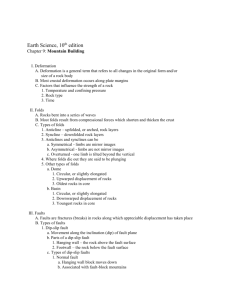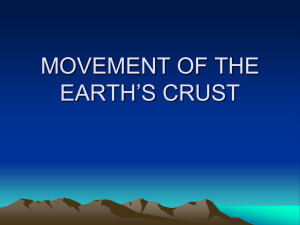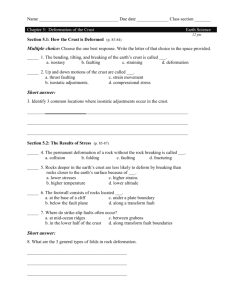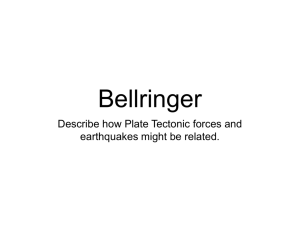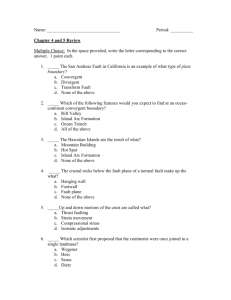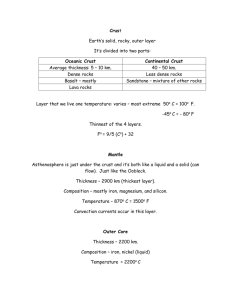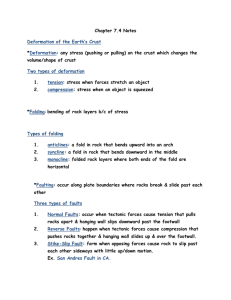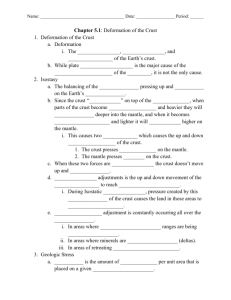Notes-Stress, Faults and Folds
advertisement
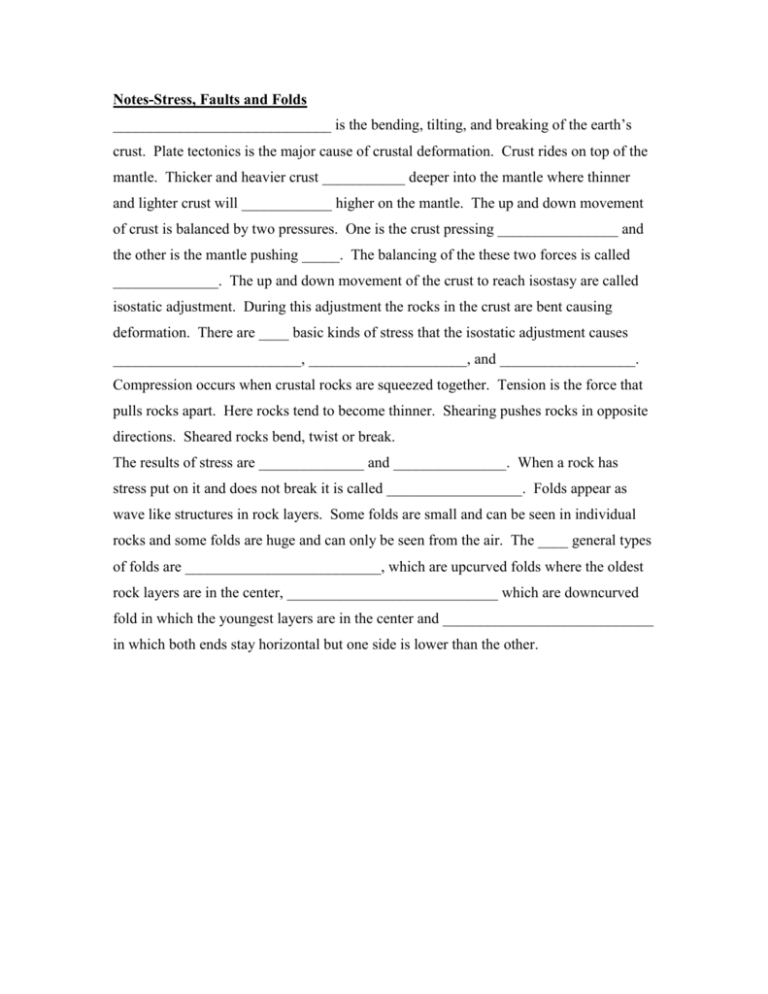
Notes-Stress, Faults and Folds _____________________________ is the bending, tilting, and breaking of the earth’s crust. Plate tectonics is the major cause of crustal deformation. Crust rides on top of the mantle. Thicker and heavier crust ___________ deeper into the mantle where thinner and lighter crust will ____________ higher on the mantle. The up and down movement of crust is balanced by two pressures. One is the crust pressing ________________ and the other is the mantle pushing _____. The balancing of the these two forces is called ______________. The up and down movement of the crust to reach isostasy are called isostatic adjustment. During this adjustment the rocks in the crust are bent causing deformation. There are ____ basic kinds of stress that the isostatic adjustment causes _________________________, _____________________, and __________________. Compression occurs when crustal rocks are squeezed together. Tension is the force that pulls rocks apart. Here rocks tend to become thinner. Shearing pushes rocks in opposite directions. Sheared rocks bend, twist or break. The results of stress are ______________ and _______________. When a rock has stress put on it and does not break it is called __________________. Folds appear as wave like structures in rock layers. Some folds are small and can be seen in individual rocks and some folds are huge and can only be seen from the air. The ____ general types of folds are __________________________, which are upcurved folds where the oldest rock layers are in the center, ____________________________ which are downcurved fold in which the youngest layers are in the center and ____________________________ in which both ends stay horizontal but one side is lower than the other. Rocks don’t always bend, sometimes they break. When the rock moves and breaks it is called a _______________. There are several different kinds of faults. There are two sides to a fault. The side that is above the fault plane is called the ____________________ ___________________. When the hanging wall moves down it is called a ___________________ fault. Normal faults occur in places where there is tension or the rocks are being pulled apart. When the hanging wall moves up it is called a ____________________ fault. Reverse faults are caused by compressional forces. A low angle reverse fault is called a thrust fault because one side is being thrust onto the other. The last type of faults are called _____________________ faults. Strike-slip faults are slide horizontally past one another. If you are looking across to the other side of a strike-slip fault and that side moves to the left of you it is called a _____________ _____________________ strike-slip fault. Strike-slip faults occur in and around transform plate boundaries like where we live near the San Andreas fault.

